This is excellent abrasive. It lasts ages, hardly clogs, and, being cloth & resin backed, can get wet without harm. Its drawback is that, since it’s supplied in rolls, it stays rolled. The grit size is printed every half yard, so I write on the rolls what it is.
Many simple jobs only require one or two grits, but it’s a nuisance having to change the paper on a cork rubber. I have rubbers to hand wrapped with 60g & 80g. But with some hardwoods, I will go down to 800g.
The abrasives on this board have been in place over 2 years and have flatted many, many items.
In the foreground are some tapered sanding sticks I made this morning.
This is an old idea, passed down generations. I made my first 40 years ago, having seen it as a tip in the “Woodworker” magazine.
But for the resin backed abrasive it’s not so good, since it can take longer to fit the paper into the slot than it takes to make a stick.
However, I wanted a range of pads immediately to hand, so cutting up a bed slat ( hope she won’t notice), I made these
Difficult to discern the taper in these images. They are 5” long, from 2+1/2” stock, the narrow end is 2+1/8”.
For storage, but easy accessibility, I have hung them from the lintel above the shed door, there are 7 of them. The paper is stapled to the narrow edge. The other edge is rounded. When I want to run through the grits in order, I use the compartmented tray. If the paper is loose, I just get in a muddle, wasting time to check which grit is next.
Of course, I keep other abrasives in different places. Emery paper is filed in a tin, other types are filed in plastic bags in a tub. What I do not want to do is traipse off to get another piece of paper if one tears. So, as you would, a file, it’s better to lift on the return stroke.
I salvaged 2 mahogany mirror arms and have used these as sanding sticks too. The abrasive strip is tensioned by gripping it somewhere on the ogee.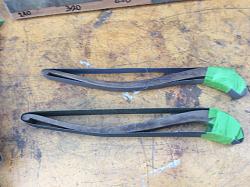


 LinkBack URL
LinkBack URL About LinkBacks
About LinkBacks
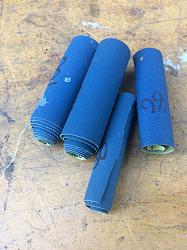
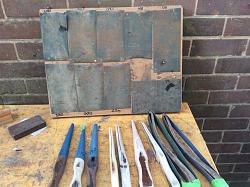
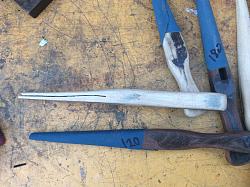
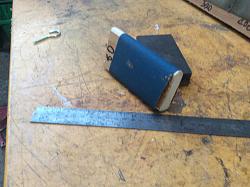
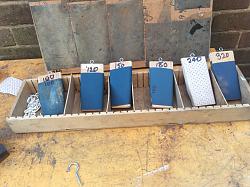
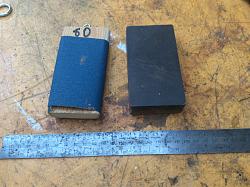
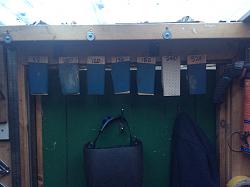


 Reply With Quote
Reply With Quote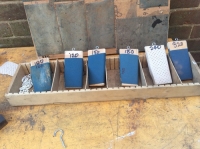




Bookmarks